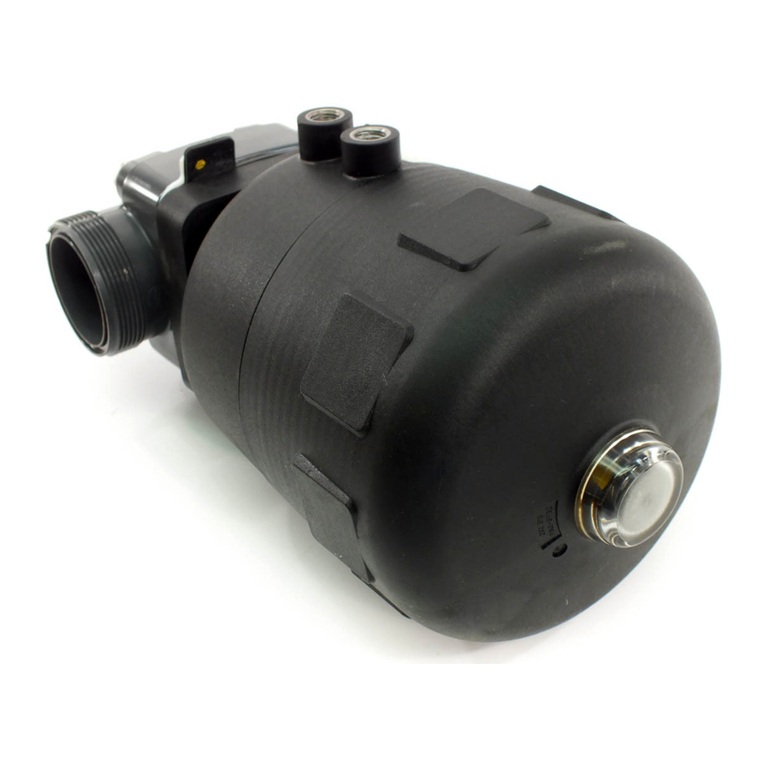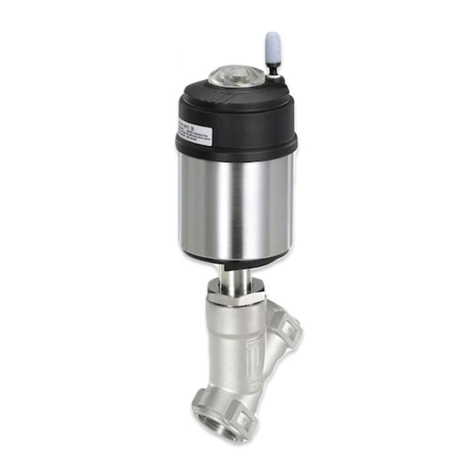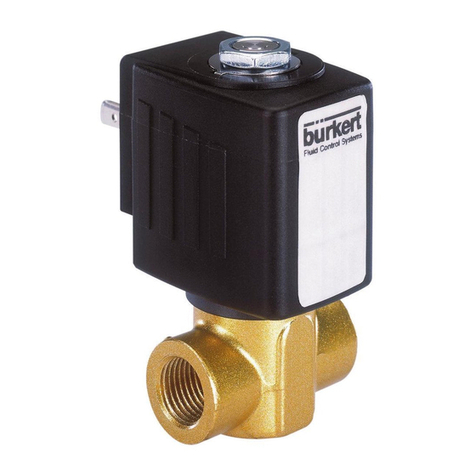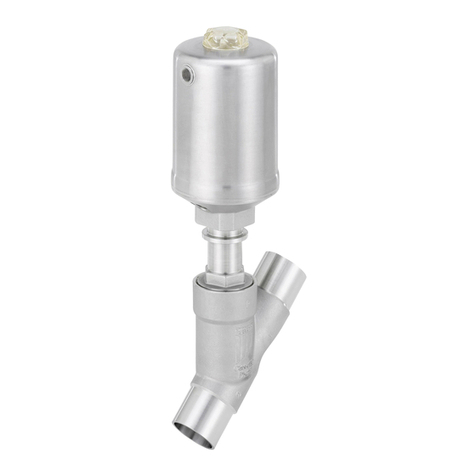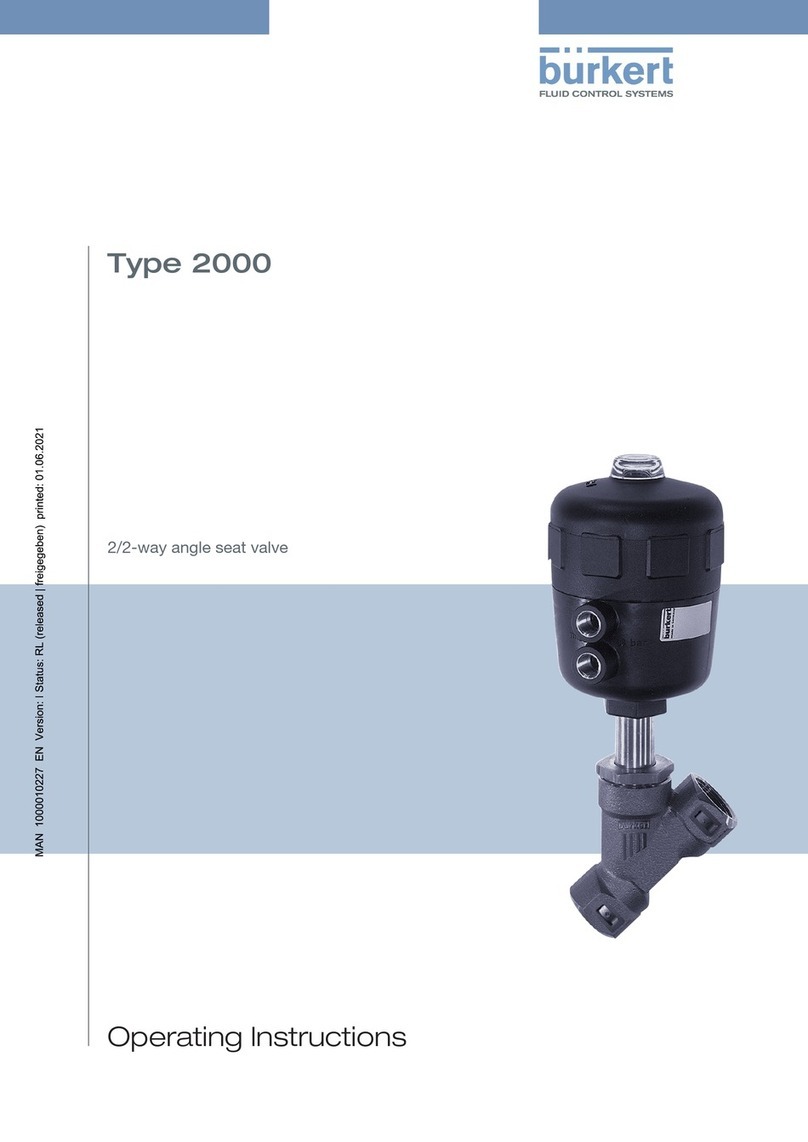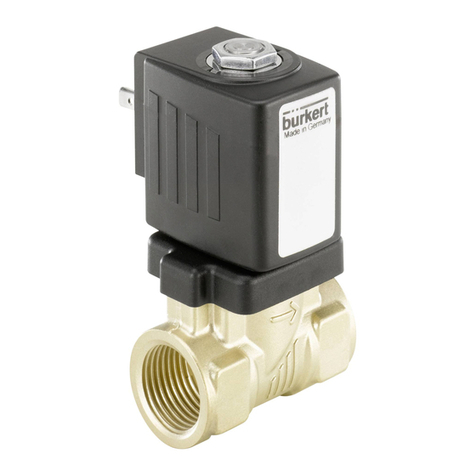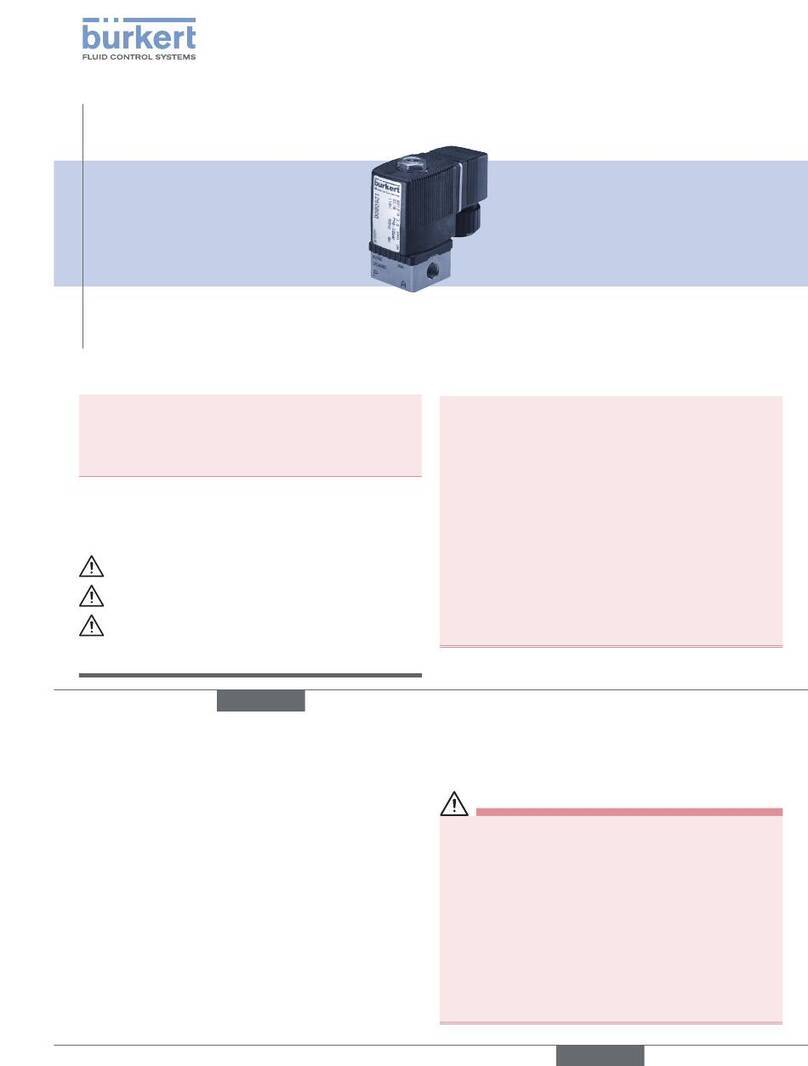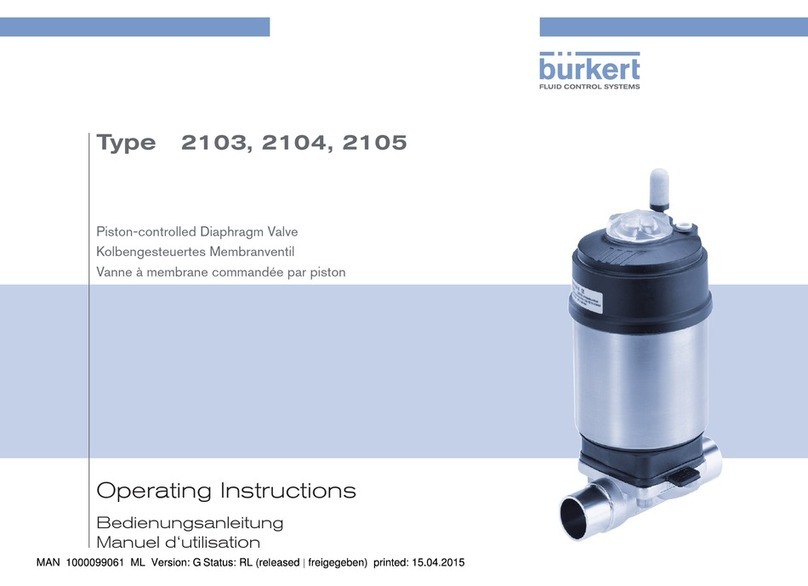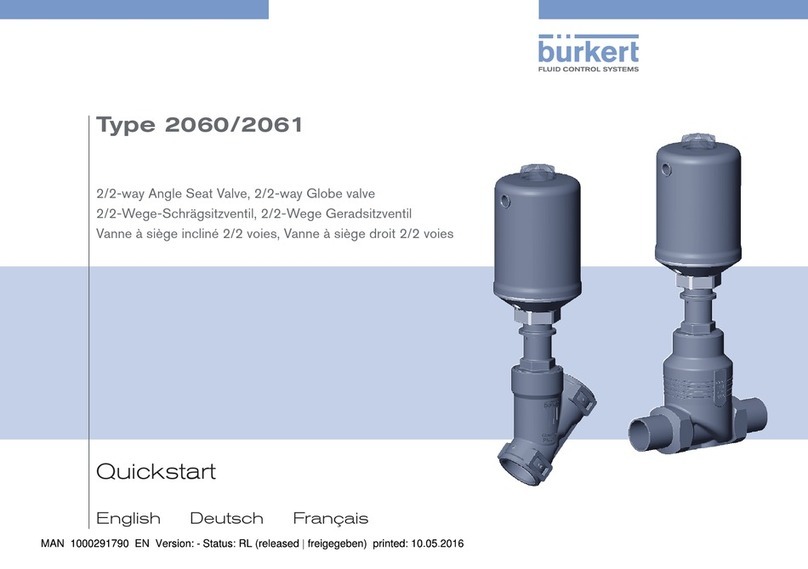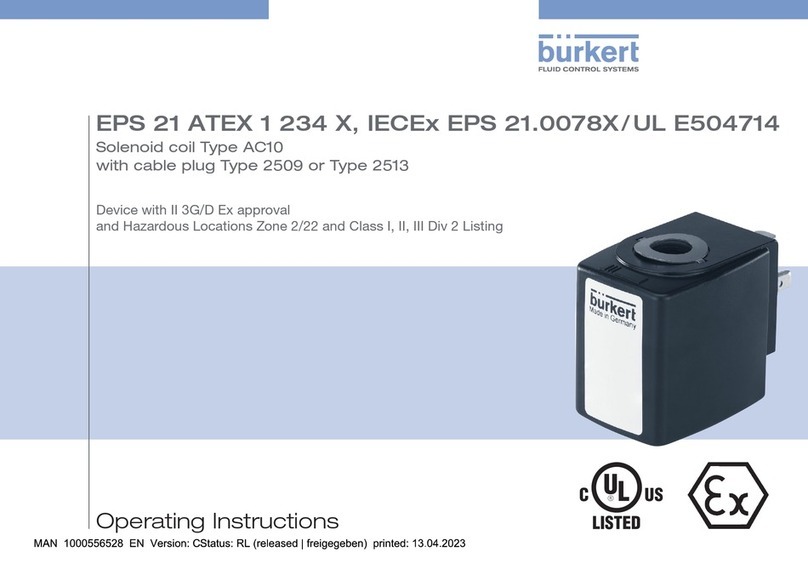
28
3. BESTIMMUNGSGEMÄSSER
GEBRAUCH
Bei nicht bestimmungsgemäßem Einsatz der
Flipper-Magnetventile Typ 6650 können Gefahren für
Personen, Anlagen in der Umgebung und die Umwelt
entstehen.
• Das Gerät ist ein mediengetrenntes Magnetventil und
zum Einsatz bei Gasen und Flüssigkeiten konzipiert
(siehe Bürkert Beständigkeitstabelle: www.buerkert.de).
• Das Gerät nicht ohne passende Schutzvorkehrungen
im Außenbereich einsetzen.
• Für den Einsatz die in den Vertragsdokumenten und
der Bedienungsanleitung spezifizierten zulässigen
Daten, Betriebs- und Einsatzbedingungen beachten.
• Das Gerät ist nicht für den Betrieb ohne geeignete
Leistungsabsenkung bestimmt, bzw. nur im Rahmen
der bestimmungsgemäßen Einschaltdauer zu
betreiben.
• Das Gerät wie in der Bedienungsanleitung beschrieben
sachgemäß transportieren, lagern, installieren, bedienen
und instandhalten.
• Das Gerät nur bestimmungsgemäß einsetzen.
3.1. Beschränkungen
Beachten Sie bei der Ausfuhr des Systems/Geräts gegebe-
nenfalls bestehende Beschränkungen.
deutsch
29
4. GRUNDLEGENDE
SICHERHEITSHINWEISE
Diese Sicherheitshinweise berücksichtigen keine
• Zufälligkeiten und Ereignisse, die bei Montage, Betrieb
und Wartung der Geräte auftreten können.
• ortsbezogenen Sicherheitsbestimmungen, für deren
Einhaltung, auch in Bezug auf das Montagepersonal, der
Betreiber verantwortlich ist.
Gefahr durch hohen Druck!
• Vor dem Lösen von Leitungen und Ventilen den Druck
abschalten und Leitungen entlüften.
Verbrennungsgefahr/Brandgefahr bei Dauerbetrieb
durch heiße Geräteoberfläche!
• Das Gerät von leicht brennbaren Stoffen und Medien
fernhalten und nicht mit bloßen Händen berühren.
• Die max. zulässige Einschaltdauer nicht überschreiten
(siehe Kapitel „6.1. Betriebsbedingungen“).
• Die für den Betrieb notwendige Wärmeabfuhr nicht
behindern.
Allgemeine Gefahrensituationen
• Den Typ 6650 nicht in explosionsgefährdeten Bereichen
einsetzen.
deutsch
30
• Die Verbindungsklammern zwischen Spule und Fluidge-
häuse dürfen unter keinen Umständen entfernt werden.
• Am Gerät keine inneren oder äußeren Veränderungen
vornehmen.
• Das Gehäuse nicht mechanisch belasten (z. B. durch
Ablage von Gegenständen oder als Trittstufe).
• Nur geschultes Fachpersonal darf Installations- und
Instandhaltungsarbeiten ausführen.
• Darauf achten, dass die Anlage nicht unbeabsichtigt
betätigt werden kann.
• Nach einer Unterbrechung der elektrischen oder
pneumatischen Versorgung für einen definierten oder
kontrollierten Wiederanlauf des Prozesses sorgen.
• Das Gerät nur in einwandfreiem Zustand und unter
Beachtung der Bedienungsanleitung betreiben.
• Für die Einsatzplanung und den Betrieb des Geräts
die allgemeinen Regeln der Technik einhalten.
deutsch
31
HINWEIS!
Elektrostatisch gefährdete Bauelemente /
Baugruppen!
Das Gerät enthält elektronische Bauelemente, die gegen
elektrostatische Entladung (ESD) empfindlich reagieren.
Berührung mit elektrostatisch aufgeladenen Personen
oder Gegenständen gefährdet diese Bauelemente. Im
schlimmsten Fall werden sie sofort zerstört oder fallen
nach der Inbetriebnahme aus.
• Die Anforderungen nach EN 61340-5-1 und 5-2
beachten, um die Möglichkeit eines Schadens durch
schlagartige elektrostatische Entladung zu minimieren
bzw. zu vermeiden!
• Elektronische Bauelemente nicht bei anliegender Ver-
sorgungsspannung berühren!
deutsch
Typ 6650

